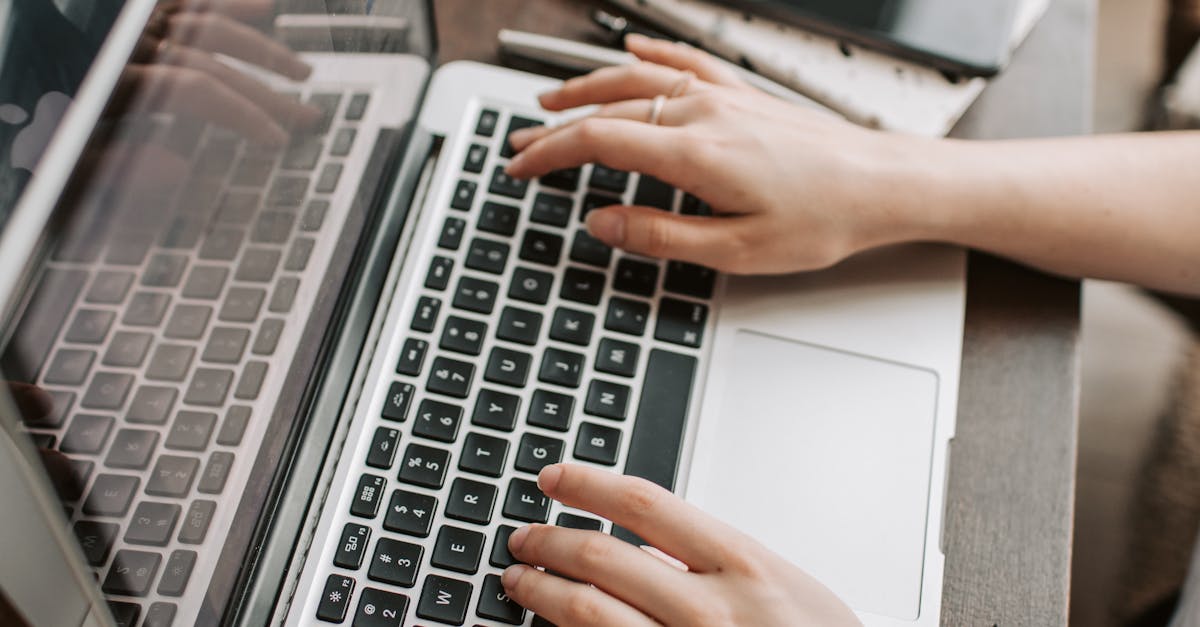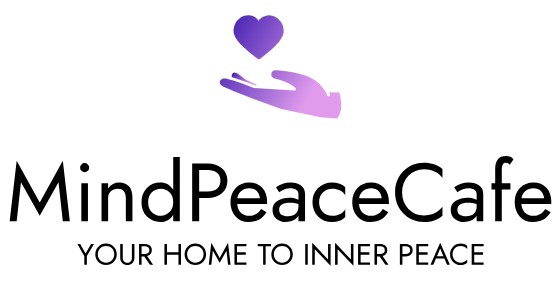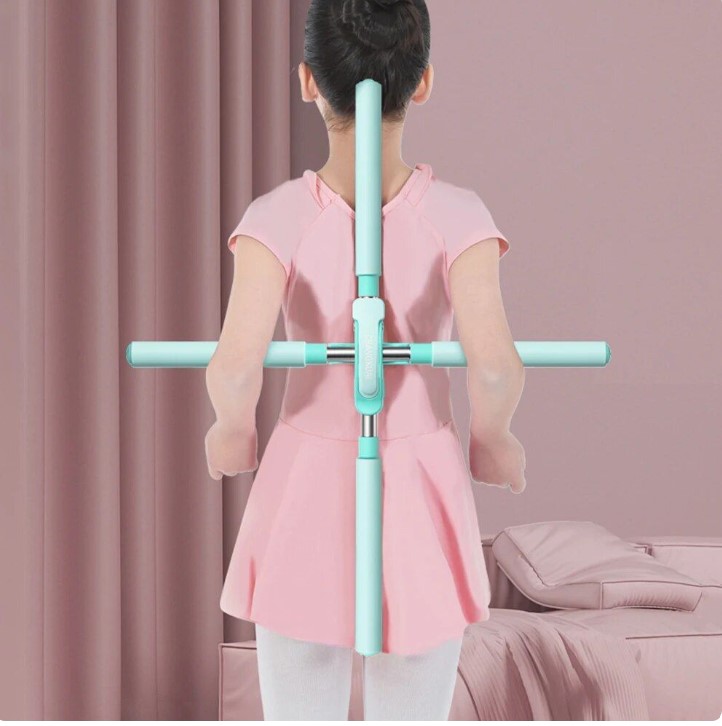Finding tranquility in a digital age: A guide to minimalism and meditation

Welcome to a journey designed to reclaim our mental space and emotional well-being in a world dominated by digital noise and constant connectivity. This article is all about embracing a digital detox and finding balance through the principles of minimalism and the practice of daily meditation. In the midst of the modern digital dilemma, where our lives are perpetually intertwined with devices, it’s crucial to understand the impact of this digital overload on our mental and emotional health. From exploring the pervasive presence of digital devices to investigating the toll on mental well-being, we’ll delve into the rise of digital overload and its effects on stress, anxiety, and overall wellness. Join us to uncover how embracing minimalism can simplify your digital life, decluttering not only your physical space but also your mindset. Discover the philosophy of digital minimalism and practical steps to minimize digital clutter, ultimately refining and streamlining your habits to reduce distractions in your daily life. Additionally, we’ll delve into the rejuvenating power of daily meditation, unveiling its benefits in fostering mental clarity and emotional balance. Whether you’re new to the concept or already intrigued by the idea, this article will provide insight into mindfulness practices and practical meditation techniques crafted to combat digital overwhelm and restore inner peace.
1. The Modern Digital Dilemma
In the bustling landscape of modern life, our digital devices have seamlessly woven themselves into the fabric of our daily routines. Yet, as we navigate this deeply interconnected digital world, it’s essential to understand the profound impact of digital overload on our mental and emotional well-being. The rise of digital overload has brought with it a myriad of challenges, from heightened stress levels to perpetual distraction, impacting our ability to find calm and focus. Research indicates that excessive digital exposure can lead to heightened states of anxiety, restless sleep patterns, and decreased overall well-being. Our dependence on screens and the constant influx of information deepens this dilemma, affecting our cognitive functions and emotional resilience. But fear not! Understanding these challenges is the first step toward redefining our relationship with technology and reclaiming our mental space.
Amid this digital landscape, it’s important to recognize the toll on mental health and work towards finding a healthy balance. Recent studies have explored the correlation between digital overload and mental well-being, shedding light on the need for conscious digital consumption and mindful disconnection. We’ll explore the pervasive presence of digital devices and how they affect our daily lives, shedding light on the rise of digital overload. By understanding the impact on stress, anxiety, and overall well-being, we can begin to navigate this modern dilemma more effectively, finding ways to prioritize our mental and emotional health in a digital age.
The Rise of Digital Overload
Picture this: a typical day begins with the gentle chimes of a smartphone alarm. We reach for our devices, greeted by an avalanche of notifications, emails, and updates. From there, our day unfolds in a symphony of screens—laptops, tablets, and phones—each vying for our attention. This scene is emblematic of the pervasive presence of digital devices in our daily lives, reflecting the rise of digital overload. We’re in an era where the average person spends hours engaging with digital technology, often without pause. The impact is profound, influencing our behaviors, habits, and mental well-being.
The proliferation of digital devices has significantly altered the way we interact with the world around us. With the advent of smartphones, tablets, and wearables, our access to information has become instantaneous and perpetual. The lure of constant connectivity has reshaped our daily experiences, blurring the boundaries between work and personal time. This has led to concerns about the long-term effects on our attention spans, cognitive abilities, and even the quality of our relationships. It’s crucial to examine how this pervasive presence of digital devices affects our daily lives, from altering our routines to shaping our interpersonal connections.
What’s more, the effects of digital overload extend beyond mere convenience. Recent studies have underscored the challenges posed by constant digital immersion, pointing to issues such as reduced productivity, attention fragmentation, and increased stress levels. As we explore the impact of digital overload, it becomes clear that achieving a harmonious balance between the digital and physical realms is essential for our overall well-being.
The Impact on Mental Health
Excessive digital exposure has become a defining feature of modern life, but its impact on mental health is a topic warranting significant attention. As we unravel the intricate web of digital overload, it’s crucial to investigate how this pervasive exposure affects stress, anxiety, and overall well-being. Studies have revealed a concerning correlation between excessive screen time and heightened levels of stress. The constant stream of information and the pressure to stay digitally connected have contributed to a culture of perpetual availability, often at the expense of mental respite and balance.
Anxiety, another prevalent consequence of digital overload, often stems from the relentless nature of digital engagement. The fear of missing out (FOMO), information overload, and the incessant notifications can contribute to a sense of unease and restlessness. Additionally, the blue light emitted by screens can disrupt sleep patterns, impacting our emotional equilibrium. This confluence of factors has led to an increased focus on understanding the toll of digital overexposure on emotional well-being.
Moreover, the overall well-being of individuals is profoundly influenced by their digital interactions. As we increasingly turn to digital platforms for work, entertainment, and socializing, it’s vital to comprehend the holistic impact on our mental health. Research delves into the effects on cognitive functions, emotional regulation, and the ability to disconnect, shedding light on the multifaceted nature of digital’s impact on our well-being.
2. Minimalism: Simplifying Your Digital Life

Embracing minimalism is like a breath of fresh air, offering respite from the digital clutter that inundates our lives. In today’s hyperconnected world, the concept of minimalist principles extends beyond decluttering physical spaces to encompass our digital existence. Digital minimalism entails a mindful curation of our online activities, streamlining our digital environments to promote focus and intentionality. By adopting minimalist principles, individuals can cultivate an environment that encourages purposeful tech use and reduces the distractions inherent in today’s digital landscape.
At its core, digital minimalism is about consciously evaluating the value that technology brings to our lives. It involves intentionally choosing the digital tools that align with our priorities and shedding those that add needless complexity. Through digital minimalism, individuals can discover a renewed sense of control over their digital footprint, promoting simplicity and tranquility in a world often characterized by information overload and constant connectivity.
Furthermore, minimalism encourages a shift in mindset, fostering an appreciation for quality over quantity in our digital interactions. This shift allows space for more meaningful digital engagement, promoting deeper connections and authentic experiences. By embracing minimalism in our digital lives, we open the door to a more intentional, focused, and fulfilling relationship with technology, one that prioritizes our well-being and aligns with our values.
Defining Digital Minimalism
Digital minimalism, at its core, encapsulates the art of intentional living in the digital sphere. It’s a mindset that emphasizes a thoughtful, deliberate approach to our online presence and engagement. By embracing this ethos, individuals can navigate the digital realm with a clear sense of purpose and intentionality, allowing them to cultivate a more balanced and mindful relationship with technology. At its essence, digital minimalism invites us to assess the value that our digital interactions bring to our lives, empowering us to curate a digital landscape that aligns with our priorities and well-being.
Furthermore, the philosophy of digital minimalism extends beyond the mere act of reducing screen time or digital clutter. It encourages us to develop a discerning eye towards the digital tools we use, embracing those that serve a meaningful purpose while eschewing those that contribute to distraction and information overload. Digital minimalism is not about rejecting technology altogether; rather, it’s about leveraging technology in ways that enrich our lives without compromising our mental space and well-being.
In today’s interconnected world, digital minimalism has become an essential framework for reclaiming control over our digital lives. The approach fosters a sense of empowerment, challenging the notion that constant connectivity and digital inundation are inevitable. Through the adoption of digital minimalism, individuals can embark on a journey towards intentional tech use, fostering an environment that promotes mental clarity, focus, and a renewed sense of digital balance.
Practical Steps to Minimalize Digital Clutter
Streamlining digital habits and minimizing digital clutter involves a series of practical steps that can significantly enhance our daily lives. One effective approach is to conduct a digital audit, evaluating the digital tools and platforms we engage with regularly. By identifying which digital activities serve us well and which ones contribute to distraction, we can begin the process of intentional curation. This might involve uninstalling redundant apps, unsubscribing from unnecessary email lists, and decluttering digital files and documents, creating a digital environment that encourages focus and productivity.
Moreover, setting boundaries around digital device usage is pivotal in minimizing digital clutter. Implementing designated tech-free hours or establishing digital-free zones in living spaces can foster healthier relationships with technology. This intentional separation allows for moments of rejuvenation, promoting face-to-face interactions, focused work sessions, and opportunities for mental restoration. Additionally, partaking in mindful tech consumption entails being present and deliberate in our digital engagements, avoiding multitasking and reducing the urge to constantly check for notifications and updates. By engendering a more mindful approach to technology, individuals can reclaim agency over their digital habits and reduce the cycle of constant digital distraction.
Furthermore, embracing minimalist digital design principles in our personal spaces can contribute to a clutter-free digital experience. This may involve organizing digital files into structured folders, utilizing minimalist-themed wallpapers to reduce visual noise, and customizing digital interfaces for simplicity and ease of use. These practical steps pave the way for a more streamlined digital landscape, allowing for increased mental clarity, reduced digital overwhelm, and a greater sense of digital balance.
3. The Power of Daily Meditation
Daily meditation holds the transformative power to bring about mental clarity and emotional balance, offering a sanctuary amid the hustle and bustle of daily life. Through the practice of meditation, individuals can unlock a wealth of benefits, cultivating a sense of inner peace and resilience. This ancient practice, often associated with spirituality, has garnered widespread attention in the modern context for its tangible contributions to mental and emotional well-being. Meditation provides a space for individuals to quiet the mind, fostering a heightened sense of awareness and presence in the current moment.
While the concept of meditation may invoke images of sitting cross-legged in deep contemplation, the reality is that meditation takes various forms, accommodating diverse preferences and lifestyles. From mindfulness meditation, where individuals focus on their breath and bodily sensations, to guided meditation sessions that utilize visualizations and affirmations, there are numerous paths to explore. Furthermore, research has illuminated the neuroscientific effects of meditation, indicating that regular practice can lead to structural changes in the brain associated with heightened emotional regulation and decreased stress reactivity. This highlights the concrete, tangible benefits that meditation can bring to one’s mental and emotional resilience.
Incorporating meditation into one’s daily routine can foster a sense of balance and harmony, providing a space for self-reflection and introspection. Whether practiced in the morning to set a positive tone for the day or in the evening to unwind and decompress, the consistent incorporation of meditation can yield profound effects on one’s mental and emotional well-being, promoting a more centered and resilient outlook on life.
Understanding Mindfulness Practices
Mindfulness practices serve as an anchor in the tumultuous sea of digital noise, offering a path to inner calm and centeredness. Mindfulness involves the conscious act of being present in the current moment, engendering a state of heightened awareness and acceptance. In the digital age, where distractions abound and the incessant hum of technology permeates our daily lives, mindfulness practices provide a valuable tool for navigating the constant stream of information while nurturing our mental well-being. By grounding oneself in the present moment, individuals can cultivate a resilient stance amidst the digital noise, fostering a sense of clarity and tranquility.
Exploring mindfulness as a tool for centering oneself amid the digital noise unveils various techniques that can be integrated seamlessly into daily routines. Mindful breathing exercises, for instance, offer a simple yet effective means of grounding oneself amidst the chaos of modern life. Pausing to take a few deep, intentional breaths can serve as a reset button, allowing individuals to disengage momentarily from digital stimuli and reconnect with their inner state. Additionally, practicing mindful awareness of the senses—such as tuning into the sights, sounds, and sensations around us—can heighten our perception of the present moment, offering respite from the whirlwind of digital distractions.
Moreover, mindfulness practices extend beyond mere stress reduction; they encompass a holistic approach to mental well-being. Studies have highlighted the mental and emotional benefits of mindfulness, showcasing its capacity to enhance focus, emotional regulation, and overall resilience. By integrating mindfulness practices into our daily lives, individuals can fortify their ability to navigate the digital landscape with grace and composure, fostering a vital balance between the digital and the personal.
Meditation Techniques for Digital Detox
Meditation presents a profound antidote to the whirlwind of digital overwhelm, offering practical techniques to restore inner peace amidst the clamor of modern life. Recognizing the need for balance and mental restoration, individuals can turn to meditation as a means to combat digital overload and reconnect with tranquility. One such technique, known as mindfulness meditation, involves focusing on the present moment without judgment, allowing individuals to acknowledge and release the persistent stream of digital thoughts and distractions. Through mindfulness meditation, individuals can cultivate a heightened sense of awareness, fostering a space for mental rejuvenation and emotional balance amidst the digital noise.
Breath-centered meditation, another valuable technique, provides a tangible way to anchor oneself in the present moment, serving as a respite from the digital whirlwind. The simple act of focusing on the breath and its rhythmic patterns can offer individuals an opportunity to disengage from the digital realm, promoting relaxation and mental clarity. This practice not only serves as a tool for combatting digital overwhelm but also paves the way for introspection and regaining a sense of inner equilibrium.
Moreover, loving-kindness meditation, often referred to as Metta meditation, offers a powerful means to counteract digital overwhelm by fostering compassion and empathy. By directing well-wishes and kind intentions towards oneself and others, individuals can infuse their digital detox journey with positive energy and emotional resilience. Through these practical meditation methods, individuals can navigate the digital landscape with enhanced emotional balance and a renewed sense of inner peace, promoting a harmonious relationship with technology and personal well-being.
4. Harmony in Practice: Blending Minimalism with Daily Meditation
Blending minimalist living with daily meditation offers a dynamic framework for nurturing a more balanced and fulfilling lifestyle. Minimalism, with its focus on intentional living and simplifying material possessions, aligns seamlessly with the principles of mindfulness and tranquility fostered by daily meditation. Both practices share a common thread: the pursuit of clarity, purpose, and mental equilibrium. By integrating these philosophies, individuals can craft a lifestyle that champions mindfulness, authenticity, and a deeper connection with the self and the surrounding environment.
At the intersection of minimalist living and daily meditation lies the opportunity to cultivate inner peace and psychological well-being. Minimalism encourages individuals to declutter not only their physical spaces but also their mental landscapes, paving the way for a more serene and uncluttered mindset conducive to the practice of meditation. Embracing a minimalist mindset can lead to the creation of tranquil, organized environments that serve as nurturing spaces for a consistent meditation practice, amplifying the effects of inner harmony and mental clarity.
Moreover, both minimalism and meditation underscore the importance of embracing the present moment. By cultivating a mindful awareness of one’s surroundings and experiences, individuals can deepen their appreciation for the simple joys of daily living. This shared emphasis on present-moment focus unites these practices, allowing individuals to savor the beauty of each moment, whether through the act of mindfully organizing personal spaces or engaging in the quiet reflection inherent in daily meditation.
Creating Your Digital-Free Spaces
Creating digital-free spaces within our lives offers an opportunity to carve out sanctuaries of peace and respite from the constant digital stimuli that pervade our surroundings. These spaces can take various forms, from designated tech-free zones within our homes to time-specific digital sanctuaries established during certain periods throughout the day. By intentionally limiting or eliminating digital devices in these spaces, individuals can foster an environment conducive to mental rejuvenation, relaxation, and meaningful human connections.
Designing digital-free spaces can involve setting boundaries within specific areas of our homes, such as the bedroom, living room, or dining area, where digital devices are either restricted or entirely absent. These spaces serve as havens for undistracted conversations, authentic interactions, and opportunities for quiet reflection, promoting a more present and mindful way of living. Additionally, individuals can establish time-specific sanctuaries during meals, family gatherings, or personal relaxation, where digital devices are consciously set aside, enabling everyone to engage fully in the present moment. By drawing these boundaries, individuals can unplug and reconnect with themselves and others, fostering deeper emotional connections and a heightened sense of gratitude.
Moreover, creating digital-free spaces can include intentional planning for outdoor excursions, nature walks, or leisurely activities devoid of digital distractions. These moments of respite provide opportunities to immerse oneself in the beauty of nature, engage in physical movement, and relish uninterrupted experiences, promoting mental restoration and a sense of balance in the digital age.
Establishing a Meditative Routine
Establishing a meditative routine that complements a minimalist lifestyle serves as a cornerstone for fostering inner peace and mental equilibrium. Crafting a sustainable daily meditation practice within the framework of minimalism involves creating a harmonious rhythm that integrates seamlessly into one’s daily life. By infusing mindfulness into daily routines, individuals can cultivate a heightened sense of self-awareness, tranquility, and a deeper connection with their surroundings, aligning effortlessly with the ethos of minimalism.
Crafting a meditative routine within a minimalist lifestyle can involve dedicating specific moments in the day for tranquil reflection and mindfulness practice. Whether it’s starting the day with a brief meditation session to set a positive tone or incorporating mindfulness exercises into daily activities such as walking or simple daily tasks, these intentional pauses facilitate a conscious and centered way of living. By weaving these moments of mindfulness into the fabric of everyday life, individuals can instill a sense of simplicity, focus, and emotional balance, resonating with the principles of minimalism.
Furthermore, individuals can integrate meditation into minimalist living through the creation of tranquil spaces conducive to meditation practice. These spaces can be adorned with minimalistic design elements and serve as sanctuaries for daily contemplation and reflection. By fostering a serene environment that aligns with the core tenets of minimalism, individuals can engender a space that supports sustained daily meditation, promoting mental clarity, purposeful living, and a holistic sense of well-being.
How can I start incorporating digital minimalism into my daily life?
You can begin by assessing your digital habits and identifying areas where you can cut back on screen time or digital distractions. Consider decluttering your digital devices by uninstalling unnecessary apps and staying mindful of your digital interactions, focusing on quality over quantity. Additionally, you can designate specific times for digital use and intentional tech-free periods, allowing you to savor moments of analogue living and mental rejuvenation.
What are some practical ways to create digital-free spaces in my home?
You can designate certain areas within your home, such as the dining room, living room, or bedroom, as digital-free zones. Establish tech-free times during meals, family gatherings, or relaxation periods to foster genuine human connections and promote mindful living. Crafting outdoor excursions or leisurely activities without digital distractions can also offer valuable opportunities for mental restoration and rejuvenation.
How can I develop a sustainable daily meditation practice that aligns with a minimalist lifestyle?
To establish a sustainable meditation routine within a minimalist framework, consider dedicating specific moments in your day for tranquil reflection and mindfulness practice. Integrate mindfulness exercises into daily activities and create serene spaces conducive to meditation. By infusing mindfulness into your daily routines and intentionally pausing for self-reflection, you can foster a sense of simplicity, focus, and emotional balance, resonating with the principles of minimalism.




